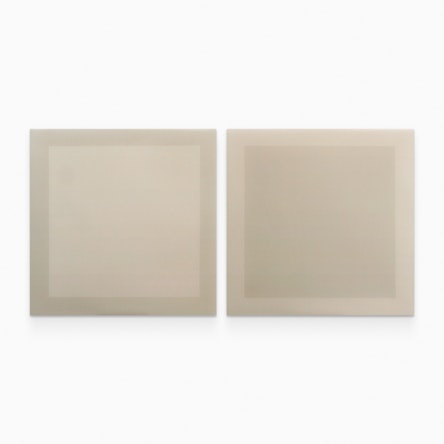
In the exhibition "Asís," artist Juan Delgado weaves a visual narrative that reflects on the passage between life, illness, and death. Using contrasts between darkness and light, he crafts an emotive and visceral experience. Immersed in historical references, the artist employs iconic elements from artistic tradition and religious syncretism to convey the fragility of human existence and the ceaseless quest for meaning.
La Cometa Gallery was founded in Bogota in late 1986. Today, through its exhibition spaces in Bogota, Medellin, Madrid, and Miami, the Gallery maintains vital dialogues between Latin American artists and their global counterparts. We represent over twenty artists that range from seminal Colombian masters to mid-career and emerging artists, the gallery’s program fosters critical thinking with new audiences across different backgrounds.

In Juan Delgado's extensive work, the possibilities of the represented image are explored through repetition and reiteration. Delgado reflects on memory and time, takes references from art history, turns his personal experience into broad concepts and seeks the symbolic power of materials and their evocative potential through media such as painting, sculpture, installation and architecture. It is complex to classify Delgado's work and exploration in a movement or current, as his wide technical and referential diversity is precisely the essence of his work. However, it is clear that it is possible to find in his work a concern for the image and its relationship with the viewer. For Delgado, the image is an extension of the past that alters the present and constitutes the raw material of his exploration, resulting in a work that moves between the limits of the sculptural and the pictorial. Another fundamental element in Delgado's artistic exploration is time. Memories, melancholy, evocation and its effects on memory appear frequently in his series. The ideas that give origin to his works are diverse: mathematics, literature, music, architecture, personal experiences, natural phenomena and abstract human concerns, and the tension between the present and the absent. All these elements are synthesized in his work, which often results in apparently simple pieces, but which approach materials in a symbolic way, enormously loaded with information.

In Juan Delgado's extensive work, the possibilities of the represented image are explored through repetition and reiteration. Delgado reflects on memory and time, takes references from art history, turns his personal experience into broad concepts and seeks the symbolic power of materials and their evocative potential through media such as painting, sculpture, installation and architecture. It is complex to classify Delgado's work and exploration in a movement or current, as his wide technical and referential diversity is precisely the essence of his work. However, it is clear that it is possible to find in his work a concern for the image and its relationship with the viewer. For Delgado, the image is an extension of the past that alters the present and constitutes the raw material of his exploration, resulting in a work that moves between the limits of the sculptural and the pictorial. Another fundamental element in Delgado's artistic exploration is time. Memories, melancholy, evocation and its effects on memory appear frequently in his series. The ideas that give origin to his works are diverse: mathematics, literature, music, architecture, personal experiences, natural phenomena and abstract human concerns, and the tension between the present and the absent. All these elements are synthesized in his work, which often results in apparently simple pieces, but which approach materials in a symbolic way, enormously loaded with information.

In Juan Delgado's extensive work, the possibilities of the represented image are explored through repetition and reiteration. Delgado reflects on memory and time, takes references from art history, turns his personal experience into broad concepts and seeks the symbolic power of materials and their evocative potential through media such as painting, sculpture, installation and architecture. It is complex to classify Delgado's work and exploration in a movement or current, as his wide technical and referential diversity is precisely the essence of his work. However, it is clear that it is possible to find in his work a concern for the image and its relationship with the viewer. For Delgado, the image is an extension of the past that alters the present and constitutes the raw material of his exploration, resulting in a work that moves between the limits of the sculptural and the pictorial. Another fundamental element in Delgado's artistic exploration is time. Memories, melancholy, evocation and its effects on memory appear frequently in his series. The ideas that give origin to his works are diverse: mathematics, literature, music, architecture, personal experiences, natural phenomena and abstract human concerns, and the tension between the present and the absent. All these elements are synthesized in his work, which often results in apparently simple pieces, but which approach materials in a symbolic way, enormously loaded with information.